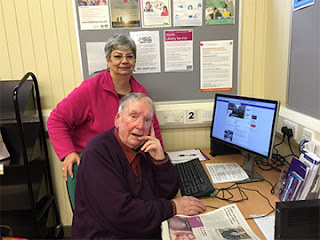On a bright day photograph a person in the sunshine. Do this outdoors in three stages.
1. First, photograph them with your back to the sun.
Write down the exposures and look at the issues involved in getting the
person’s expression and pose right.
2. Next, photograph the person with their back to the
sun. Write down the exposures. If you can, look at the highlights and the
shadow readings given from the spot metering. If you can’t set spot metering
then you can still get some indication of the difference in brightness. Look to
see if there’s burn-out – over-exposure of the hair or black shadow areas
without any light at all. The contrast ratio will be very high – what do you
think it is?
3. Take the photograph again but this time use a
reflector. Write down the reading that you get from the face and the contrast
level.
Picture No 1 - My back to the sun, f5.6 @ 1/1600th
The subject had a hard time looking at the camera because of the sun shining directly in his eyes. He had to squint. The sun produced hard shadows and emphasised his nose with an elongated shadow.
Picture No 2 - Subject's back to the sun; f5.6 @ 1/500th
The image was easier on the subject but it meant that there were overall darker areas but not so pronounced as with the previous image. There's significant burn out on the left side of the face (facing the subject) and still some darker shadows but not as heavy as when facing the sun.
Picture No 3 - Subject's back to the sun with white reflector; f5.6 @ 1/400th
The reflector made it much easier to get a decent image as the white reflector threw white light on to the dark areas and lightened them considerably.
 |
| Back to the sun with reflector |






